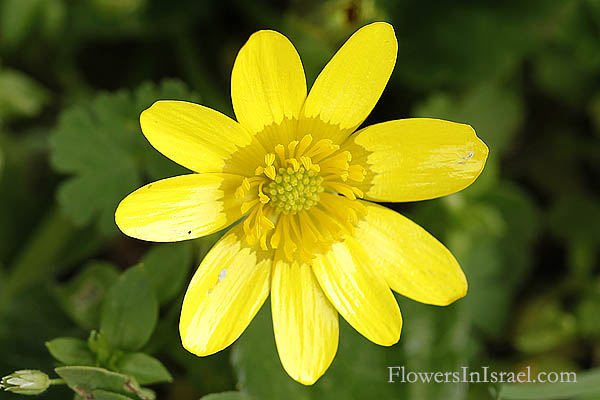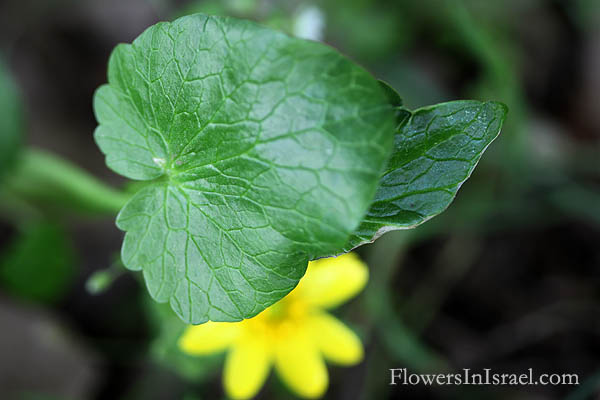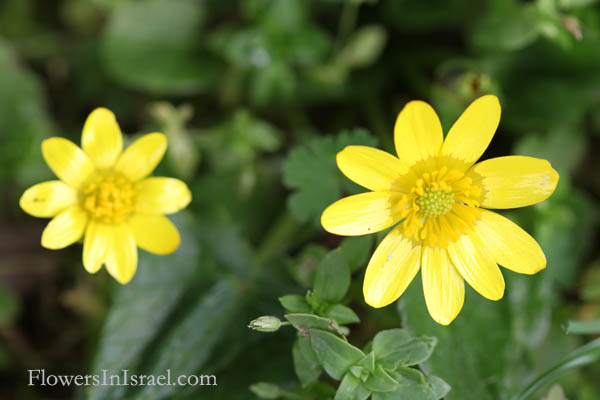Lesser celandine, Marsh pilewort, Fig Buttercup,
Hebrew: נורית הלב, Arabic: الماميران الربيعي
| Scientific name: | Ranunculus ficaria L. | |
| Synonym name: | Ficaria ranunculoides Moench., Ficaria verna Huds. | |
| Common name: | Lesser celandine, Marsh pilewort, Fig Buttercup | |
| Hebrew name: | נורית הלב | |
| Arabic name: | الماميران الربيعي | |
| Plant Family: | Ranunculaceae, נוריתיים |

Location: Golan Heights, Odem Forest |
| Life form: | Geophyte | |
| Leaves: | Alternate, rosette; entire; smooth | |
| Flowers: | Yellow; hermaphrodite | |
| Flowering Period: | January, February, March, April | |
| Habitat: | Batha, Phrygana | |
| Distribution: | Mediterranean Woodlands and Shrublands, Semi-steppe shrublands | |
| Chorotype: | Med - Euro-Siberian | |
| Summer shedding: | Ephemeral |

Location: Golan Heights, Odem Forest Derivation of the botanical name: Ranunculus, rana, "frog", Ranunculus, "little frog", literally froglike (from marshy places). ficaria, of or belonging to figs. verna, of or belonging to spring. ranunculoides, like the genus Ranunculus. The Hebrew name: נורית, nurit, from Aramaic: נוריתא, nurita; נור, nur: to give light, to shine; to burn; Aramaic: נורא ,נור (=fire).

Location: Golan Heights, Odem Forest |